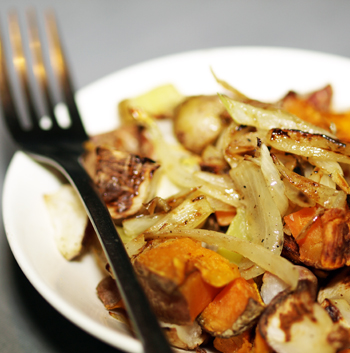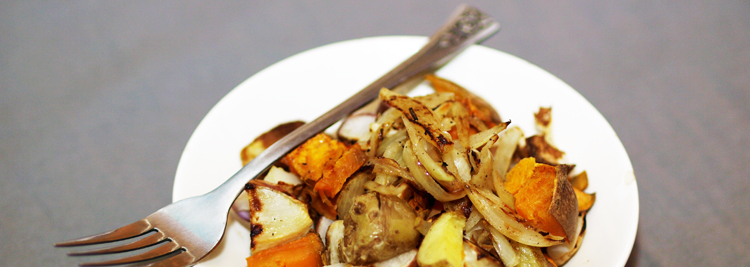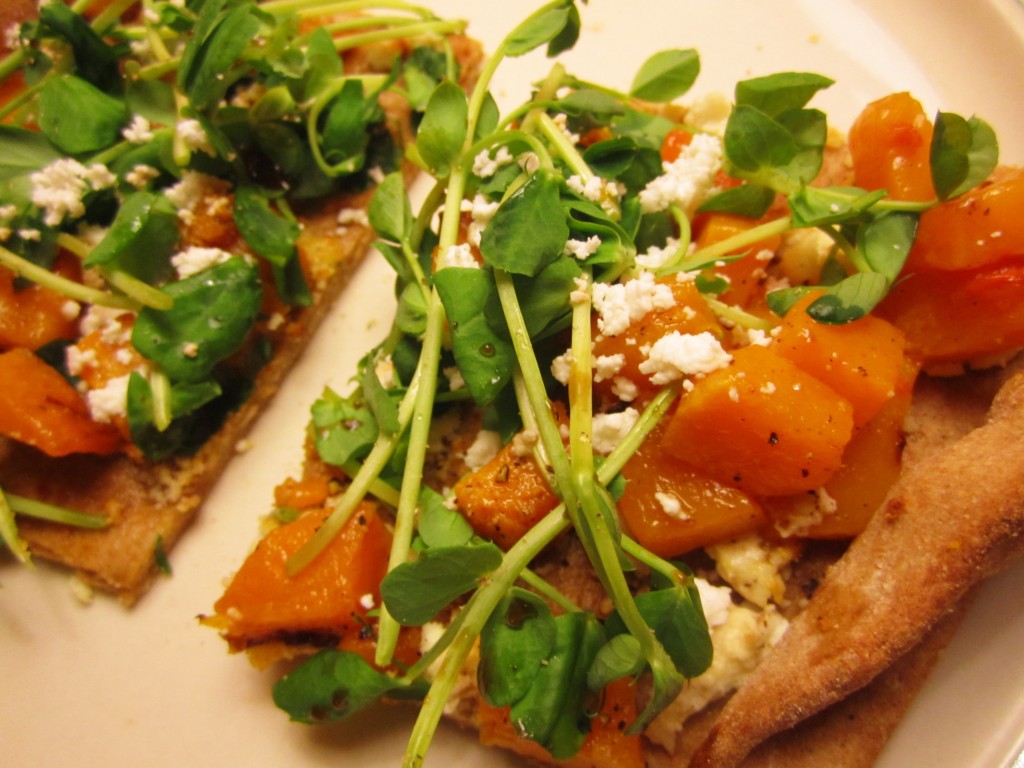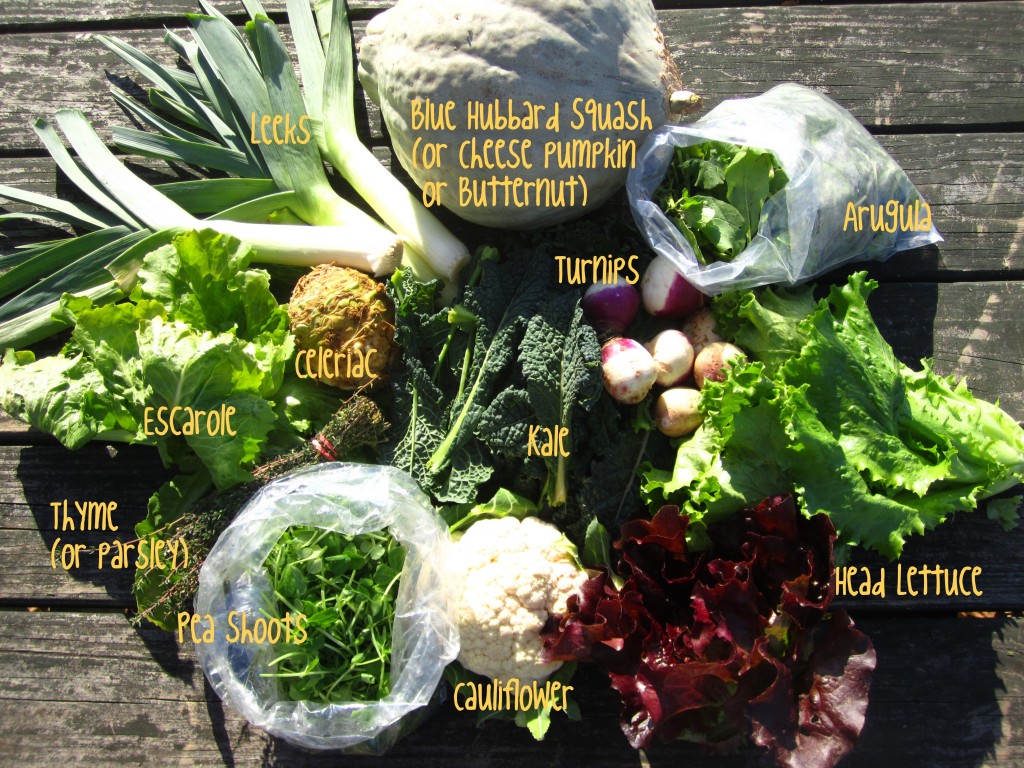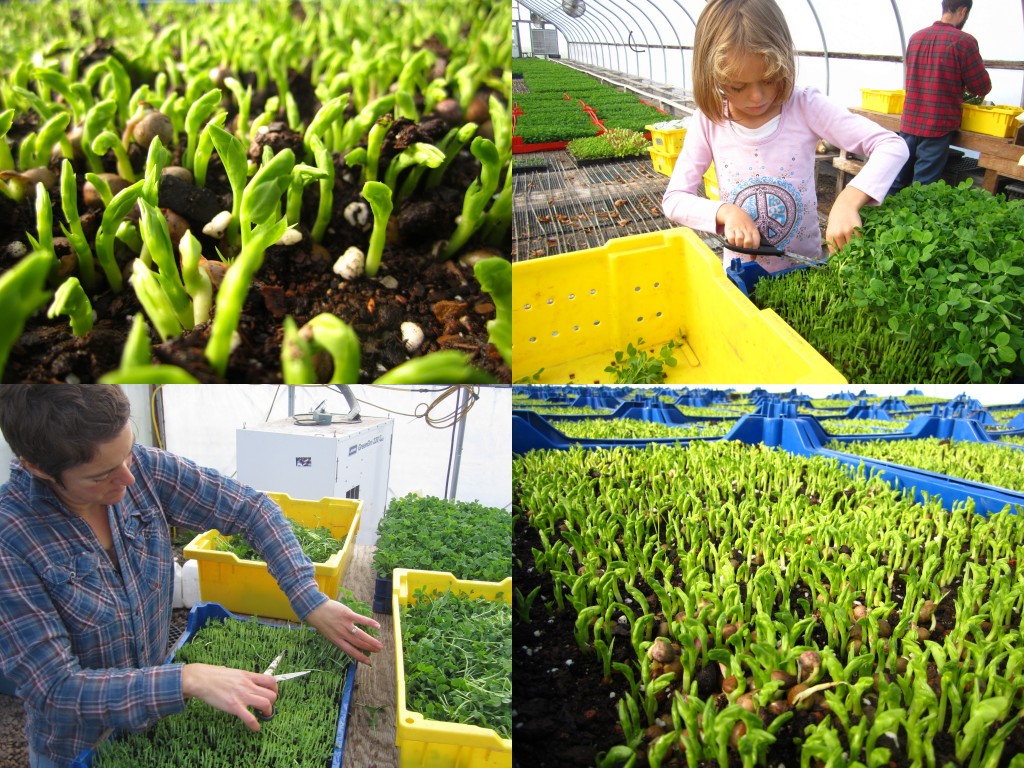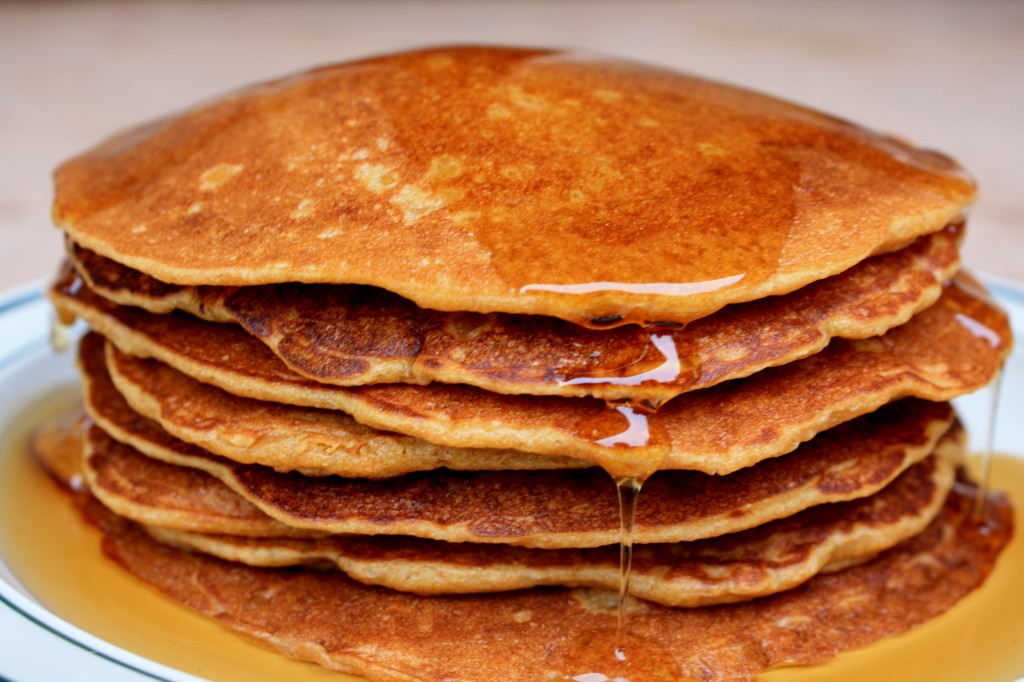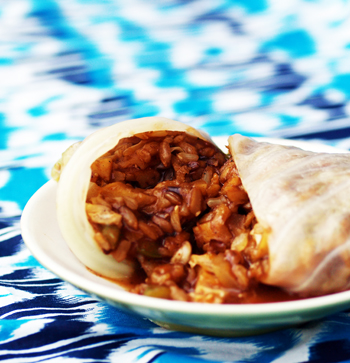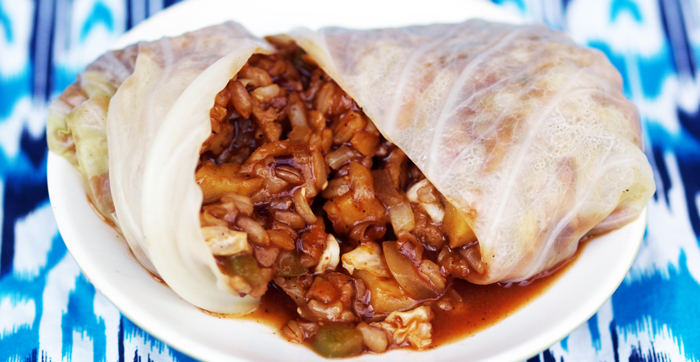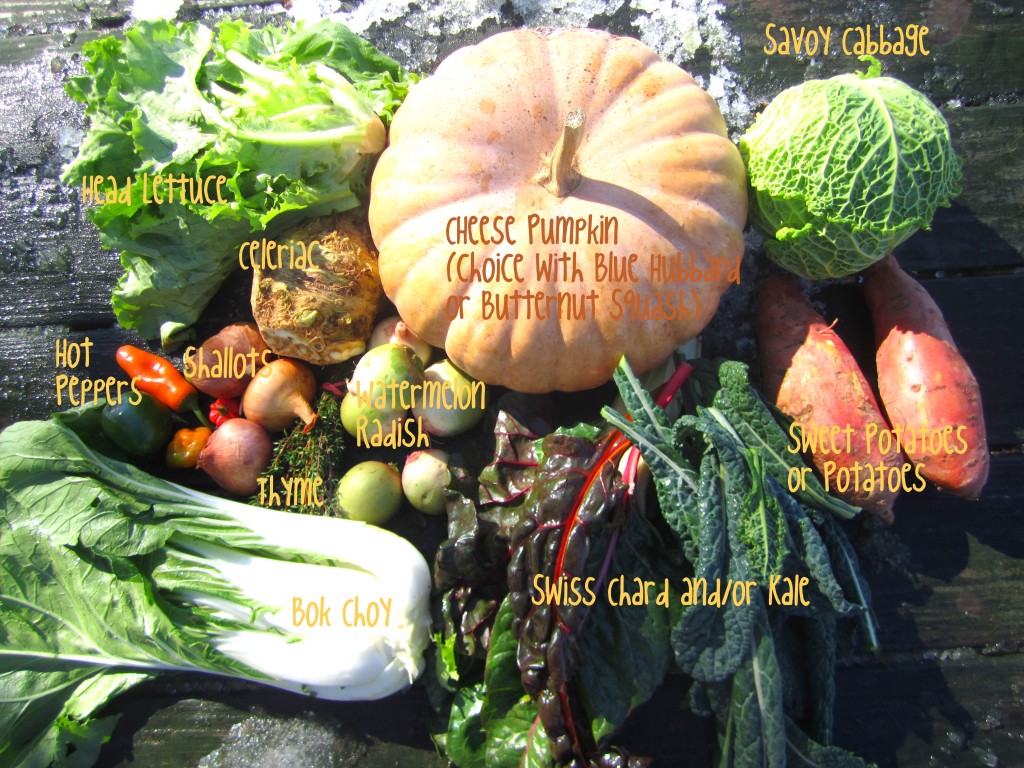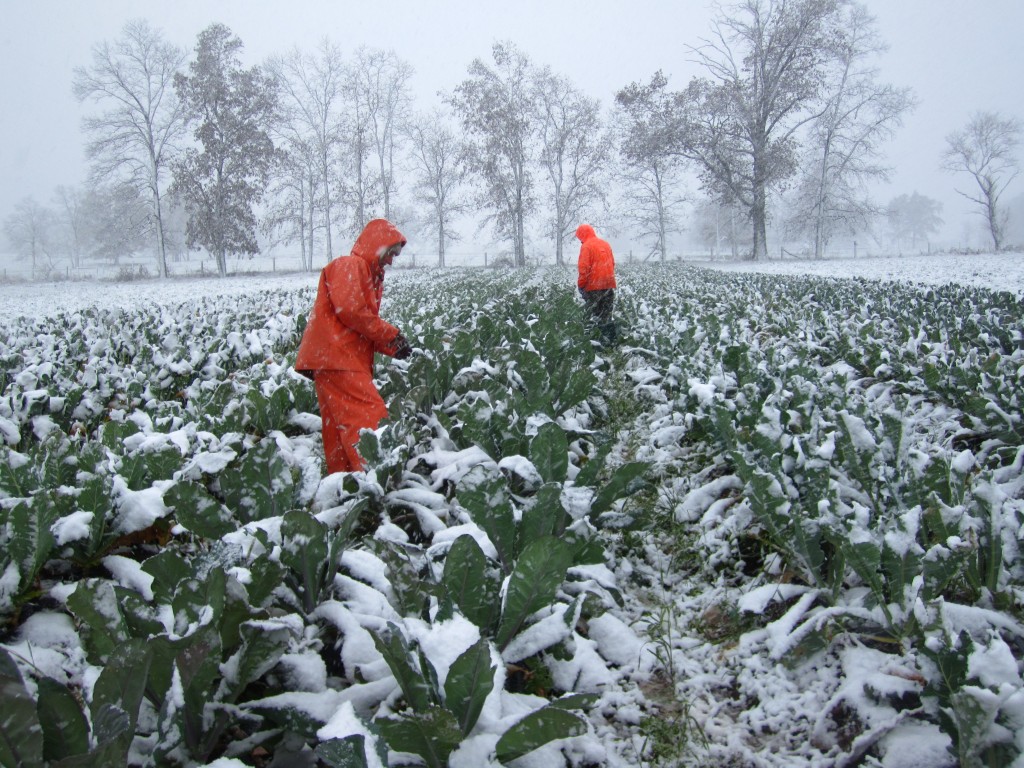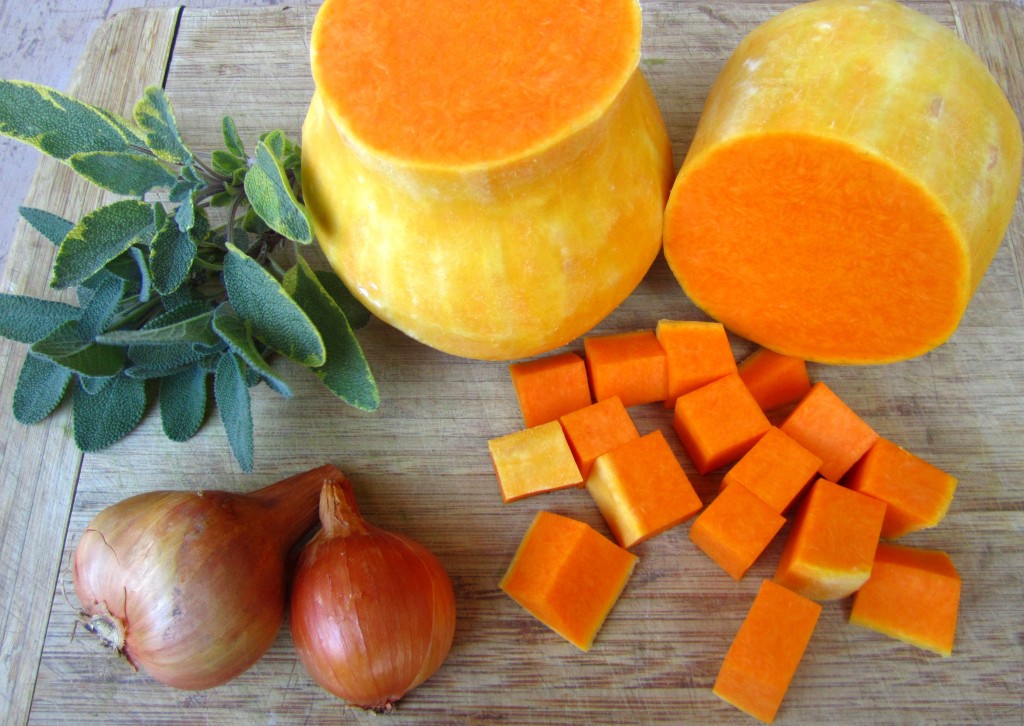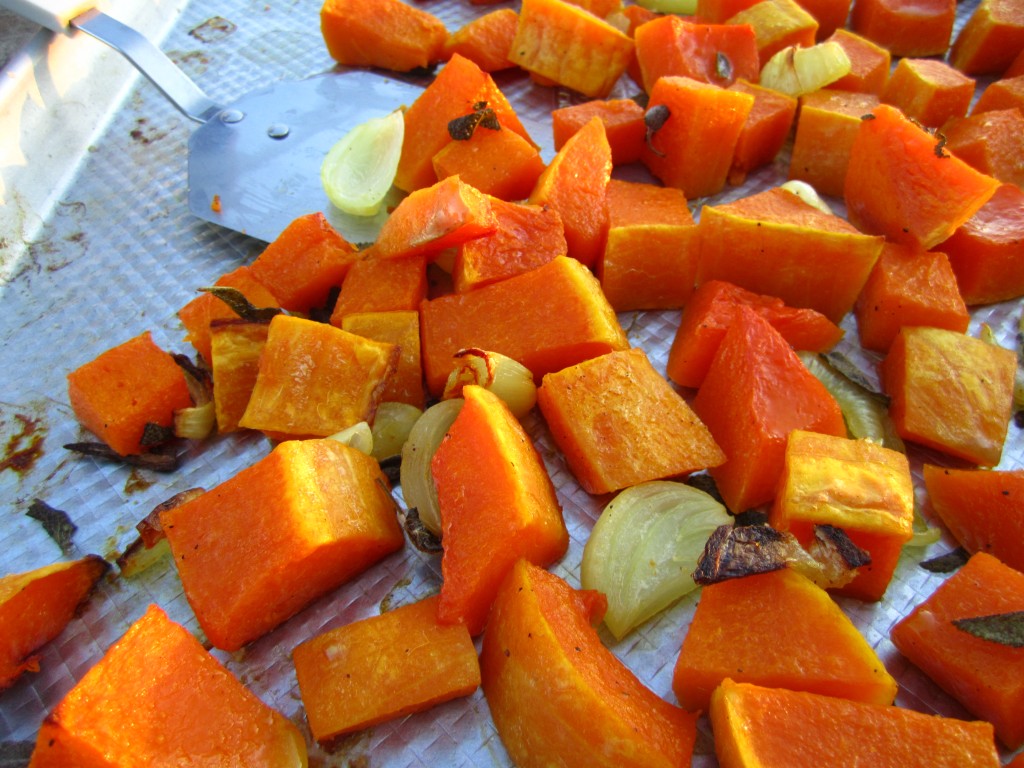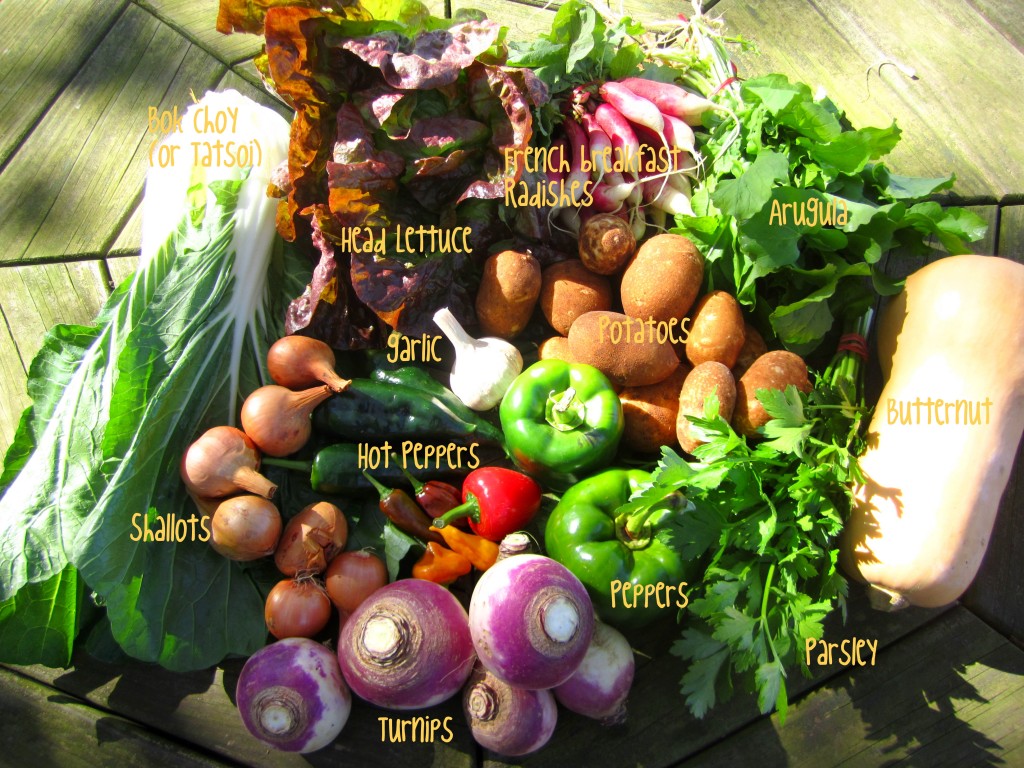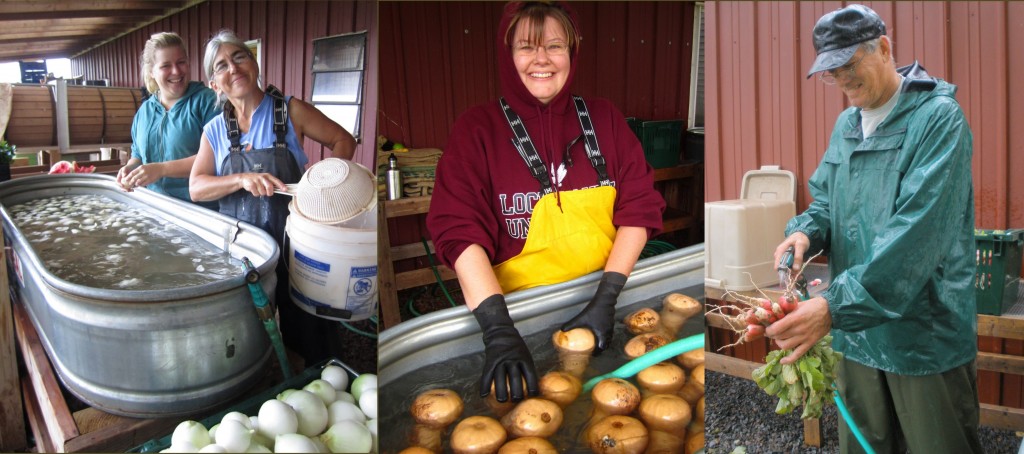06 Jan Perspective: A circle completes
This story is the first in a series of articles written by various Blooming Glen Farm CSA members. Enjoy this glimpse into the past offered by Blooming Glen native, Les Swartley.
When I was approximately 1 year of age, my parents moved from Telford to Blooming Glen. We moved to a farm house with a large barn on 13 acres at the edge of town on the northeast side of Rt. 113. My father did not farm but from time to time we did keep animals in the barn. The barn was also used by other farmers and individuals to raise animals and store crops.
Blooming Glen was my childhood universe. Watching and helping feed the cows, pigs, chickens, turkeys, horses, ducks and other assorted farm animals were experiences that make me smile as I think about them. Bottle feeding in the warm basement next to the coal stove some undernourished baby pig unable to compete with siblings for their mother’s milk was a lesson on the fragility of life. Having a dozen little peeps huddling under a hot light bulb in the basement until they were able to survive on the outside is also a vivid memory.
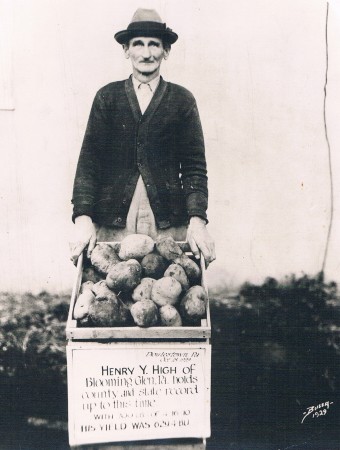
Les Swartley's great-grandfather, Henry Y. High of Blooming Glen, 1929, "holds county and state records up to this time" with 700 pound harvest.
Watching the crops of corn, wheat, oats and soy beans being planted, raised and harvested, hitching rides on farm equipment to do the various duties associated with crop farming and finally unloading the hay and straw, corn, and oats in the barn were all part of the seasonal progression of life.
My parents, relatives, and neighbors all had gardens and grew most of the standard garden vegetables. Multi-family gatherings did the canning in the fall. It was a fun time running around the farm with cousins and friends while our mothers worked. We always had tasty fresh food at the end of the day. Crushed sweet corn and applesause come to mind as my favorites.
Meat and other supplies came from local farms or we walked to Moyers store at the intersection of Rt 113 and Blooming Glen Road for almost everything else.
I had no idea how difficult it would become as an adult to get real farm grown fresh vegetables raised within walking distance by a local farmer. As farm land was sold and subdivided, fewer and fewer acres remained available to raise fresh crops. Serious farmers were even more difficult of find.
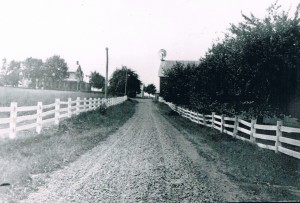
What is now Blooming Glen Farm in 1914. Moyer Road, named after the original landowners, was once a dirt drive lined with fruit trees and white fencing.
As CSA’s began gaining a foothold in local communities, my wife suggested that we look into the Blooming Glen Farm CSA at 98 Moyer Road operated by Tricia and Tom, and only a mile from our present home. The farm also happens to be a place of great childhood memories for me. The large pond was a gathering place for ice skating, with a huge fire warming our fingers so we could take off our skates and ride our bikes back home. Hockey games, hot shot skating, and crack the whip were the usual activities.
To be able to participate with the many members of the Blooming Glen Farm CSA and our leaders Tricia and Tom in fostering a healthier lifestyle, maintaining and improving farmland, and building a sense of community through the farm and the lifestyle it promotes, is a way of connecting to my roots and childhood memories.
The circle is complete.
Submitted by Les Swartley — meteorite watcher, backyard landscaper and gardener, and former Industrial Real Estate Broker.






